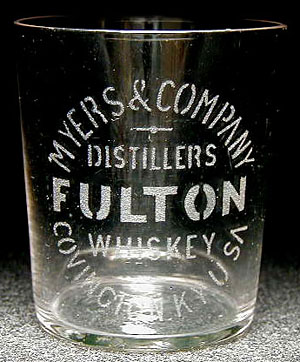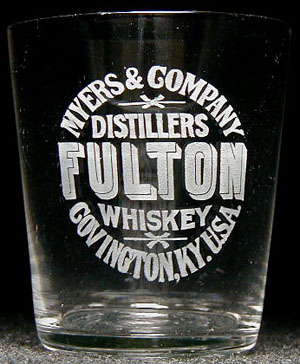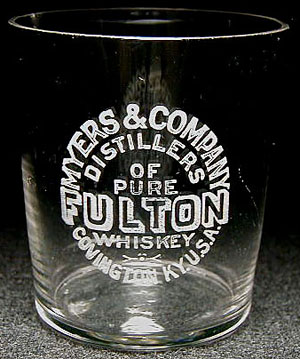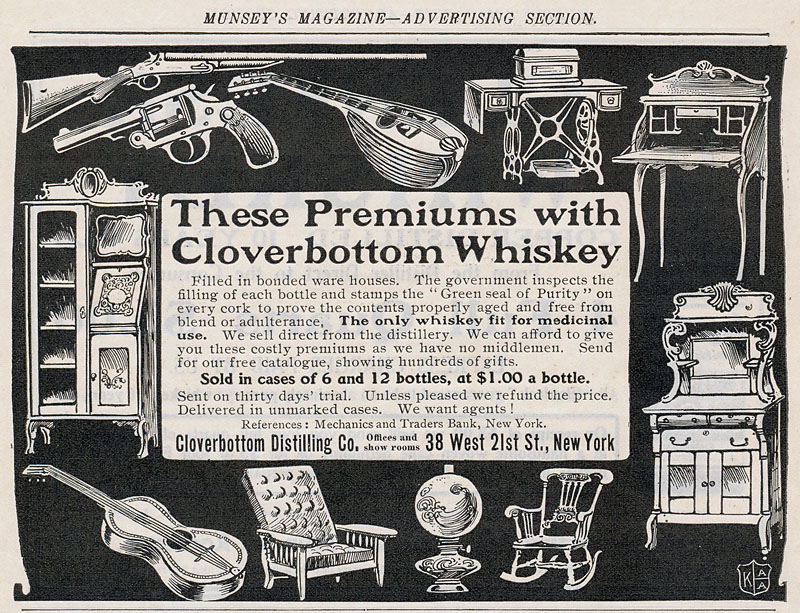
|
Mass
marketing of whiskey through ads in newspapers and magazines
meant intense competition between the various
purveyors of liquor. The main players were the distilleries
and the wholesalers, both of whom targeted saloons and hotel
bars because they bought liquor in bulk (i.e., by the case or barrel).
Distilleries initially had the edge because their product was consistent and reliable. This contrasted with the wholesalers who, in the years prior to the Pure Food and Drugs Act of 1906, blended raw alcohol with extracts and beading agents to create something that looked and tasted like aged whiskey, but was instead a cheap and often toxic imitation (read a recipe book used by Rectifiers and Blenders for creating a liquors sold as "rye whiskey" and "bourbon"). Once the Pure Food Act had been passed, however, competion intensified and both distilleries and the larger wholesalers tried to lure new customers with advertising premiums. For example, an order for a case of whiskey might be rewarded with a free corkscrew, a glass serving decanter or tray -- and a half-dozen thin-walled shot glasses.
A few liquor dealers ran ambitious incentive programs that rewarded loyal buyers with coupons or certificates that could be traded for various items from a special catalog (the programs were reminiscent of and were probably based on the S&H Green Stamp program that first began in 1896 and continued operating through to the 1980's). Rewards included small items such as pens and glassware, but also musical instruments, firearms, furniture, and even farm implements! The best-known of these reward programs was operated by the Kellerstrass Distilling Co. of Kansas City, MO. (flip through the pages of one of their catalogs), but there were many others, including one run by the Cloverbottom Distilling Co. of New York, NY. One of their advertisments from a 1903 edition of Munsey's Magazine is shown below. |
Please contact the glassmaster with questions or comments




